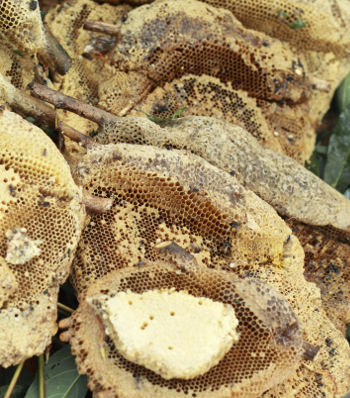The Missing Kingdom: Why Fungi Must Be Central to Conservation Strategy
28 December 2025
Published online 30 June 2015
Roles of worker bees change as they get older, gene regulation study finds.

An international research team led by Vladimir Bajic of King Abdullah University of Science and Technology (KAUST) in Saudi Arabia, and colleagues from the US and Japan, has identified a gene regulatory network that governs age-related changes in their division of labour1.
A complex repertoire of activities makes honeybees a favourite for researchers investigating the relationship between brain and behaviour. Although the transition between the nursing and foraging states is associated with changes in gene expression throughout the brain, little is known about how the changes are regulated.
Bajic and his colleagues used a technique called CAGEScan to compare the transcriptomes of nurses and foragers. This allowed them to determine the promoter regions, or transcription start sites, of genes that are differentially expressed in the brain during these different behavioural states. It also allowed them to identify the transcription-factor proteins that bind to them and control their activity.
They identified a total of 1,058 differentially expressed genes, 534 of which are up-regulated (which leads to increased expression of genes and proteins encoded by genes) in the brains of foragers, with the remaining 524 being up-regulated in the brains of nurses.
Although the number of genes was almost identical in each group of bees, those that were up-regulated in the foragers’ brains were arranged in 29 clusters, whereas those up-regulated in the nurses were arranged in 21 clusters, suggesting that foragers have greater variation in their gene regulatory patterns. Many of the genes up-regulated in nurses encode proteins involved in metabolism.
Genes associated with metabolism were also up-regulated, but so, too, were numerous other genes that are known to be involved in nervous system development, nerve cell function and neuronal plasticity; perhaps reflecting the more demanding cognitive tasks required of them, such as spatial navigation and the ability to manipulate flowers and remember the location of multiple foraging sites.
The researchers also identified four transcription factors that are up-regulated in nurses and 22 that are up-regulated in foragers. Most of these bind to promoter regions within the differentially expressed genes, suggesting that they regulate expression of these genes.
The results are consistent with an earlier finding that reducing the activity of one of these transcription factors, called USP, delays the transition from nursing to foraging behavioural states.
“We are now planning to compare data obtained by different sequencing technologies to discover new genes,” says Abdullah Khamis, one of the first authors of the research.
This article was corrected on 8 July, 2015. It erroneously credited Abdullah Khamis as the lead author of the research instead of Vladimir Bajic.
doi:10.1038/nmiddleeast.2015.108
Stay connected: